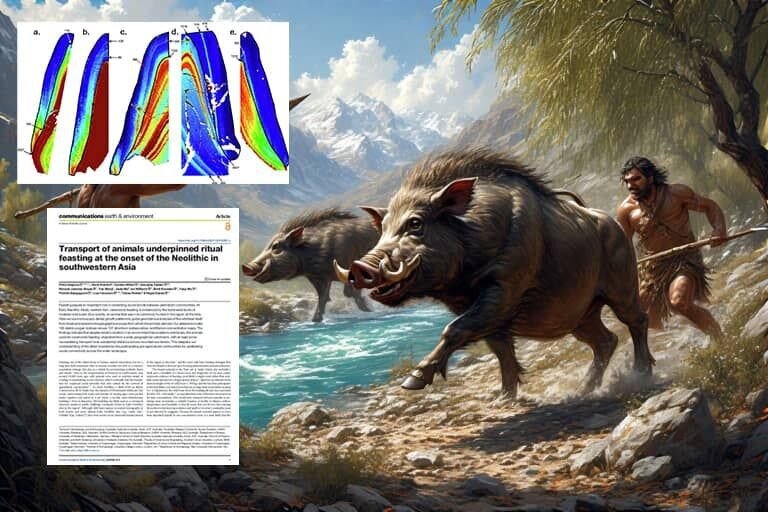11,000-year-old secret revealed: Boars transported across Zagros for ritual feasts in western Iran

TEHRAN - A study by an international team has revealed that pre-agricultural communities at the Early Neolithic site of Asiab, near Kermanshah in western Iran (~9660–9340 cal BCE), engaged in complex logistical efforts to provision large-scale ritual feasts.
Isotopic analysis of five wild boar molars from a ceremonial deposit containing 19 individuals demonstrates these animals were transported significant distances. Scientists employed sophisticated dental analysis techniques, treating teeth as chemical diaries.
By analyzing oxygen and strontium isotopes within sequential enamel layers, researchers tracked the boars' geographical origins and movements during their lives, as these isotopes vary with landscape and geology. Mapping barium concentrations across tooth cross-sections identified abrupt dietary changes, indicating seasonal migrations or shifts in foraging grounds. Crucially, the microscopic study of daily dental growth lines provided precise chronological control, allowing researchers to connect chemical signatures to specific weeks or seasons.
The analysis showed that four of the five boars originated at least 70 kilometers away from Asiab, requiring transport across the rugged intermountain plain of Kermanshah. Variations in oxygen signatures within their teeth indicate the boars lived at elevations differing by over 500 vertical meters, confirming hunters sourced animals across extreme mountain terrain. Dietary markers further revealed the boars came from separate herds and were captured in different seasons, between February and September, proving they weren't hunted in a single expedition but gathered from multiple locations throughout the year.
Transporting just one 70 kg boar carcass across 70 km of rough terrain path would take at least two days, representing a massive investment of time and energy far exceeding basic subsistence needs and highlighting the cultural importance of these feasts.
This constitutes the earliest documented evidence of long-distance animal transport for ritual purposes in pre-agricultural societies. The deposit of nineteen wild boars (approximately 700 kg of meat) reveals Neolithic communities leveraged feasting for profound social functions. This orchestrated event likely cemented alliances between distant groups through shared ritual participation, showcased hunting prowess in procuring dangerous game, and expressed spiritual connections with wild animals. The boars served as a symbolic bridge between communities and nature, foreshadowing pig domestication in the region.
The findings are expected to transform our understanding of early social complexity, demonstrating sophisticated organizational capabilities and landscape-scale social connectivity that required coordinated effort long before agriculture. The special status of wild boars here, echoed in ritual art at sites like Göbekli Tepe, highlights a shared Neolithic cultural tradition centered on powerful wild animals, setting the stage for domestication in Southwest Asia.
AM
